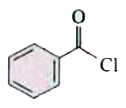Which of the following are the derivatives of endoderm?
Muscles and blood
Alimentary canal and respiratory organs
Excretory and reproductive organs
Skin and nerve cord
To determine which of the following are derivatives of the endoderm, we can follow these steps:
1. Understand the Concept of Germ Layers:
- The human body is formed from three primary germ layers: ectoderm, mesoderm, and endoderm. Each of these layers gives rise to different organs and systems in the body.
2. Identify the Germ Layers:
- Ectoderm: The outermost layer, responsible for forming the skin, hair, nails, and nervous system.
- Mesoderm: The middle layer, which gives rise to muscles, bones, blood, and the excretory and reproductive systems.
- Endoderm: The innermost layer, which forms the lining of the digestive tract and respiratory system, as well as associated glands.
3. Analyze the Options Provided:
- Option 1: Muscles and blood - These are derived from the mesoderm.
- Option 2: Alimentary canal and respiratory organs - These are derived from the endoderm.
- Option 3: Excretory and reproductive organs - These are derived from the mesoderm.
- Option 4: Skin and nerves - These are derived from the ectoderm.
4. Select the Correct Derivatives:
- From the analysis, only Option 2 (alimentary canal and respiratory organs) is derived from the endoderm.
5. Conclusion:
- The derivatives of the endoderm are the alimentary canal and respiratory organs.
Final Answer:
The derivatives of endoderm are the alimentary canal and respiratory organs.
- The human body is formed from three primary germ layers: ectoderm, mesoderm, and endoderm. Each of these layers gives rise to different organs and systems in the body.
- Ectoderm: The outermost layer, responsible for forming the skin, hair, nails, and nervous system.
- Mesoderm: The middle layer, which gives rise to muscles, bones, blood, and the excretory and reproductive systems.
- Endoderm: The innermost layer, which forms the lining of the digestive tract and respiratory system, as well as associated glands.
- Option 1: Muscles and blood - These are derived from the mesoderm.
- Option 2: Alimentary canal and respiratory organs - These are derived from the endoderm.
- Option 3: Excretory and reproductive organs - These are derived from the mesoderm.
- Option 4: Skin and nerves - These are derived from the ectoderm.
- From the analysis, only Option 2 (alimentary canal and respiratory organs) is derived from the endoderm.
- The derivatives of the endoderm are the alimentary canal and respiratory organs.
The derivatives of endoderm are the alimentary canal and respiratory organs.
Topper's Solved these Questions
- HUMAN REPRODUCTION BOOK - CENGAGE BIOLOGY ENGLISHCHAPTER - HUMAN REPRODUCTION EXERCISE - Assertion -Reasoning Question
16 Videos
- HUMAN HEALTH AND DISEASEBOOK - CENGAGE BIOLOGY ENGLISHCHAPTER - HUMAN HEALTH AND DISEASEEXERCISE - ARCHIVES
46 Videos
- MICROBES IN HUMAN WELFAREBOOK - CENGAGE BIOLOGY ENGLISHCHAPTER - MICROBES IN HUMAN WELFAREEXERCISE - ARCHIVES
26 Videos
Similar Questions
Knowledge Check
Which of the following is not acid derivative?
A B
B C
C D
D
Which of the following medicines are the derivatives of malonyl
urea. (Barbituric acid)
View SolutionWhich of the following medicines are the derivatives of malonyl urea. (Barbituric acid)
View SolutionAll of the following are the derivatives of tyrosine except
View SolutionWhich of the following are mesodermal and endodermal in origin respectively ?
View SolutionWhich of the following is not a nitro derivatives?
View SolutionWhich of the following hormone is a derivative of tyrosine?
View SolutionWhich of the following hormones is a derivative of amino acid
View Solution
